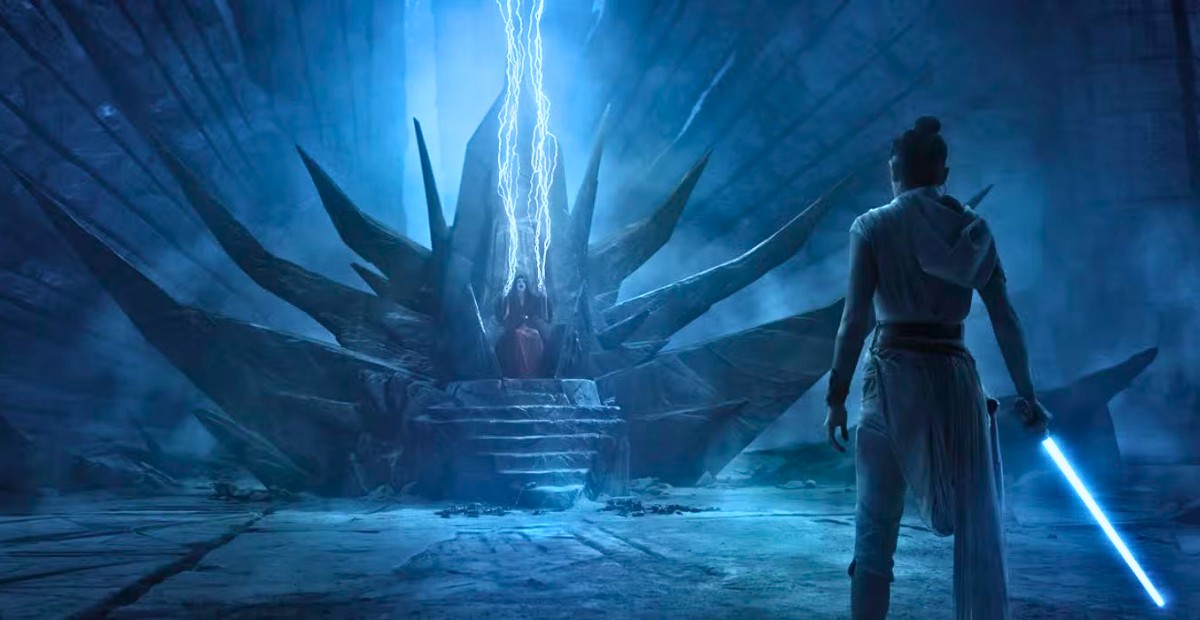Exegol, known as the hidden world of the Sith, is a place shrouded in mystery, legend, and darkness.
First introduced in The Rise of Skywalker, it was described as a barren planet, buried deep in the Unknown Regions, and served as the final stronghold for Emperor Palpatine and his Sith Eternal followers.
According to legend, Exegol was a thriving, fertile world that the Sith laid to waste, much like other Sith-dominated planets such as Korriban and Ziost.
With its harsh storms, hidden shipyards, and an atmosphere so dark that even droids needed optimization to function properly, Exegol was set up as a perfect stage for something grand.
But despite its potential, Exegol felt underused and ultimately wasted. Here’s a deeper dive into how this intriguing location fell short of expectations in The Rise of Skywalker.
1. Missed Opportunity for World-Building and Expanded Sith Lore
Exegol had the potential to be an essential part of the Star Wars universe, much like iconic Sith worlds like Korriban and Moraband.
The film could have used Exegol to dive deeper into Sith history, rituals, and legends.
Concept art even hinted at statues of Sith Lords like Revan and Malak, but none of these elements made it into the final movie.
Instead, Exegol became a hollow backdrop for the rushed reveal of Palpatine’s return and Rey’s sudden lineage shift.
Originally, Rey was meant to be “no one,” a powerful character whose significance wasn’t tied to her family’s legacy.
Daisy Ridley confirmed that this was the plan through the first two films, and both she and many fans loved the idea of Rey’s “nobody” status.
However, The Rise of Skywalker turned Rey into Palpatine’s granddaughter, a twist that felt abrupt and undermined the previous films’ message.
Even Ridley and the actors didn’t know about this shift until late in the process, highlighting how rushed and unplanned it was.
This change didn’t just affect Rey’s character, it also wasted the potential of Exegol.
Rather than being a fully realized Sith world, Exegol became just another setting for the final battle, with no deeper exploration of its significance or connection to the Sith legacy.
If Palpatine’s return and Exegol’s importance had been developed earlier in the trilogy, the story could have felt more cohesive.
Exegol could have been the key to exploring more about the Sith, but it ended up being a missed opportunity, just like Rey’s character arc, which shifted from “nobody” to yet another legacy figure.
Both the planet and Rey’s storyline deserved more attention and depth, but ultimately, they were wasted in the rush to conclude the trilogy.
2. Inconsistent and Illogical Use of Exegol’s Fleet and Superweapons
Another frustrating aspect of Exegol was the appearance of the massive fleet of Star Destroyers hidden beneath the planet’s surface.
While visually striking, the fleet felt out of place and didn’t make sense within the story’s logic.
How did Palpatine manage to hide, build, and crew this enormous fleet without anyone noticing?
Where did the resources and people come from to staff thousands of these planet-destroying ships?
In Star Wars, superweapons like the Death Star hold significant narrative weight, but here, the fleet of Star Destroyers felt like an unnecessary rehash of past ideas.
It could have been more effective to introduce a smaller but deadlier threat, which would have been more believable and still maintained the tension without straining suspension of disbelief.
Instead, the sudden appearance of such a massive fleet felt too convenient and over-the-top, diminishing the impact it could have had on the plot.
How could it have been handled better?
A smaller, more focused threat from Palpatine’s forces, with a more grounded explanation of how Exegol operated as a hidden Sith fortress, would have been far more compelling.
The movie didn’t need another galaxy-threatening superweapon to feel epic; a few well-placed, well-explained dangers would have done the job.
3. Lack of a Lived-In, Realistic Atmosphere on Exegol
Exegol was introduced as a desolate, stormy planet, with massive underground shipyards and a dark, foreboding atmosphere.
But despite this intriguing setup, it didn’t feel like a real, functioning place.
The Sith Citadel seemed like an empty ruin, and the Sith followers were left standing around with no clear purpose or sense of belonging to a living, breathing society.
Part of what makes Star Wars planets feel real is the sense that they exist beyond the scope of the immediate story.
Planets like Tatooine and Coruscant are filled with life, culture, and daily activities that give them depth.
Exegol, on the other hand, felt hollow. There was no indication of how this planet sustained itself or how the Sith Eternal lived and operated.
The movie missed the chance to show us more of the planet’s culture, its inhabitants, or even just basic infrastructure like cities or settlements.
What would have made it better?
Showing a glimpse of life on Exegol, whether through the Sith cult or other inhabitants, would have added a layer of realism.
Even seeing more of the shipyards or how the Sith followers survived there could have brought the planet to life.
This would have given audiences the chance to believe that Exegol was more than just a plot device.
Final Thoughts
In The Rise of Skywalker, Exegol had the potential to be a pivotal Sith world rich with history and intrigue, but it was ultimately underused.
The film missed the opportunity to dive deeper into Sith lore, instead rushing through key elements like Palpatine’s return and Rey’s sudden lineage reveal.
Exegol’s massive fleet also lacked explanation, making it feel implausible within the story.
Furthermore, the planet itself felt hollow, with no sense of a functioning society. In the end, both Exegol and Rey’s character arc were wasted in the race to conclude the trilogy.

